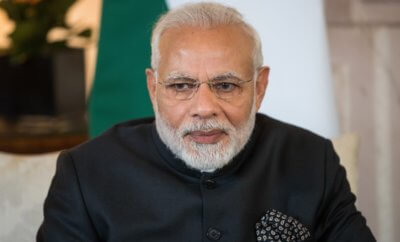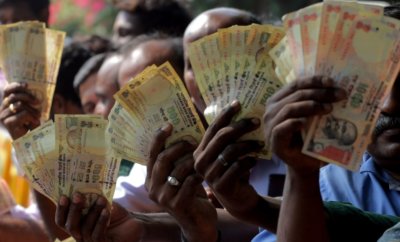Business
Richest 1% People Own 73% Wealth in India: Oxfam

A shopping mall in Delhi.
Bigstock
Globally, the richest 1 per cent of the world's population generated 82 per cent of the wealth in 2017, according to the Oxfam report.
The richest 1 per cent people in India owned 73 per cent of the wealth generated in 2017 in India, according to Oxfam’s latest report on rising income inequality. In 2016, India’s 1 per cent population owned 58 per cent of the wealth generated that year.
Globally, the richest 1 per cent of the world’s population generated 82 per cent of the wealth in 2017 while 3.7 billion people saw no increase in their wealth.
People in India, the United States and the United Kingdom think that CEOs should take a 60 per cent pay cut. In India, it is believed that the ratio of top pay to ordinary workers’ salary is 63 and it should be 14. However, the actual ratio is 483.
The increase in CEO pay is linked to share-based incentive systems, which focus on maximizing shareholder value. With executives and managers having stock options, their investment also increases. Moreover, the share of wages accrued by top 10 per cent is high and growing in developing economies like Brazil, India and South Africa, the report said.
The poorest half of the country, 67 crore people, saw only 1 per cent increase in their income whereas the wealth of the richest 1 per cent grew by over Rs. 20.90 lakh crore during 2017, which is almost equal to the total budget of the central government in 2017-18, Oxfam India said.
The report, titled ‘Reward Work, Not Wealth’, published ahead of the World Economic Forum meet in Davos, Switzerland, said, “2017 saw an unprecedented increase in the number of billionaires, at a rate of one every two days. Billionaire wealth has risen by an average of 13 per cent a year since 2010 — six times faster than the wages of ordinary workers, which have risen by a yearly average of just 2 per cent.”
The multinational non-profit organization called on the Indian government to ensure that the income of the bottom 40 per cent population grows faster than that of the top 10 per cent. Oxfam suggests that if the government encourages labor-intensive sectors, invests in agriculture, and effectively implements the social protection schemes that exist the income divide can be bridged.
“Seal the leaking wealth bucket by taking stringent measures against tax evasion and avoidance; taxing the super-rich by re-introducing inheritance tax, increasing wealth tax, reducing and eventually do away with corporate tax breaks; creating a more equal opportunity country by increasing public expenditure on health and education,” Oxfam India said in a statement.
India added 17 new billionaires last year, raising the number to 101 billionaires. Indian billionaires’ wealth increased by Rs. 4,891 billion — from Rs. 15,778 billion to over Rs. 20,676 billion.
India’s Garment Sector
In India and the Philippines, at least one in every two workers in the garment sector is paid below the minimum wage. During 2011-12, as much as 50.70 per cent workers in the garment sector in India were paid below the minimum wage. During the same period, among those earning less than minimum wage, 74 per cent were women while 45.3 per cent were men.
On average, it takes a CEO from the top five garment companies a little more than four days to earn what an ordinary Bangladeshi woman garment worker earns in her whole lifetime.
The report also said that more women are employed in the informal sector and receive the lowest of wages. In India’s garment sector, the workers are mostly women and teenage girls who are modern day slaves, according to a separate report. “Across the world, women consistently earn less than men and are concentrated in the lowest paid and least secure forms of work,” the report said.



